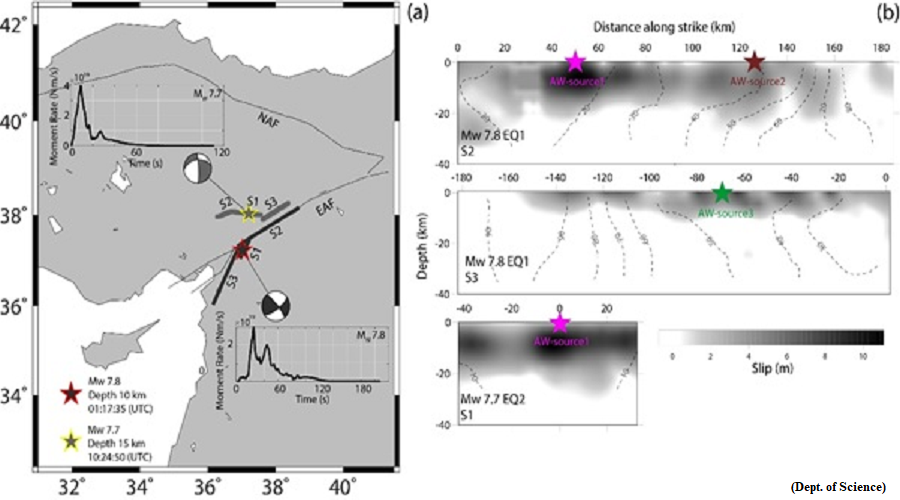Threatened species up by 25 percent in Queensland Wet Tropics (GS Paper 3, Environment)

Why in news?
- Climate change has pushed 25 per cent more organisms in Australia’s biodiversity-rich northern rainforests into the list of threatened species since 2020, a new report showed.
- The rainforests are world heritage sites.
Factors resposnsible:
- The new report ‘State of the Wet Tropics’ was highlighted the growing threats and declining health of species such as ringtail possum.
- The species was given international protection in 1988, but climate change, habitat loss and degradation of supporting ecosystem poses threats.
- Invasive species and diseases also threaten the existence of these species.
- It further stated that a number of other species, specifically the endemic rainforest frogs, high-altitude birds, ringtail possums and plants of the Myrtaceae family that were considered secure while listing, “now face significant challenges from accumulated and compounding threats”.
Wet Tropics bioregion:
- The country is home to about 600,000 native species and a high proportion of them endemic to the region.
- The Wet Tropics bioregion contains 26 per cent of Australia’s vascular plant species.
- Some 314 of these are classified as Vulnerable, Endangered or Critically Endangered, with a further 98 species listed as Near Threatened.
- It is a similar story for vertebrates, with at least 25 per cent of the area’s fish, amphibians, birds and mammals having some level of conservation significance. The report observed that information on the region’s invertebrate taxa is not adequate.
Impact:
- The authors attributed this significant increase in threat to climate change and its impact on the species at multiple levels. The extinction of endemic vertebrate fauna in the region was predicted to occur by more than 50 per cent about 15 years ago.
- The area’s distinctive upland flora and fauna were specifically affected as the protection of suitable climate offered for cool-adapted species is declining and further impacting their ability to adapt due to natural geographic barriers and modified landscapes.
- As many as nine species and subspecies of birds endemic to Wet Tropics now stand classified as threatened as per the International Union for Conservation of Nature criteria and additional five are Near Threatened due to climate change.
- Upland populations were impacted with increasing temperature and changing rainfall patterns, while the lowland populations are experiencing heatwaves.
- Climate change could further alter waterflows, threatening freshwater species with reduced runoff in headwater streams.
- Apart from changes in water regimes, climate change may affect the food supply and add nutritional stress among species.
Reflection of Earthquake Source Process in the Ionosphere could pave way for deciphering earthquake
(GS Paper 1, Geography)
Why in news?
- Earthquake processes, even relatively smaller ones, have their reflection in the ionosphere, as they influence the amplitudes and periods of coseismic ionospheric perturbations (CIP) along with factors such as geomagnetism and line-of-sights geometry, according to a novel study.
- The finding can help observing earthquake source processes from the space which may pave the way for deciphering earthquake precursors using space-based observations.

CIP:
- Coseismic vertical crustal movements excite acoustic waves (AWs) in the atmosphere.
- The waves propagate upward, reach the ionosphere, causing disturbances in numbers of electrons along the line-of-sights connecting ground Global Navigation Satellite System (GNSS) receivers and satellites. These disturbances are called as coseismic ionospheric perturbations (CIP).
- Such near-field CIP occurs normally within 500–600 km of the source. Most of the past studies assumed point sources at the maximum vertical displacements for direct AWs and such near-field CIP had been modeled by assuming single acoustic pulse from the surface.
- However, large earthquakes involve ruptures of multiple fault segments spanning hundreds of kilometres and for such great earthquakes; such a single source assumption may become inappropriate.
Recent research:
- Scientists from Indian Institute of Geomagnetism (IIG), in their attempt to verify this assumption for relatively small earthquakes, (less than 8 Mw) analysed near-field CIP of 2023 February Turkey Earthquakes.
- They demonstrated for the first time, that ionospheric perturbations generated by relatively small earthquakes could also contain contributions from multiple sources along the fault.
- On 6 February 2023, a devastating earthquake of Mw 7.8 (EQ1) occurred in southern Turkey near the Turkey-Syria border, one of the largest strike-slip events recorded on land. Around 9 hrs later an earthquake of Mw 7.7 (EQ2) occurred to the north of EQ1.
Outcome:
- Studying CIP generated by EQ1 and EQ2, showed for the first time that CIP shows variety of amplitudes and periods for different satellite-station pairs due to combinations of sub-CIPs from multiple sources with different time lags.
- They elaborated that interference of acoustic waves (AWs) from these multiple sources makes differences in the perturbations amplitudes and periods at Global Navigation satellite System (GNSS) stations in different azimuths from the epicentre.



